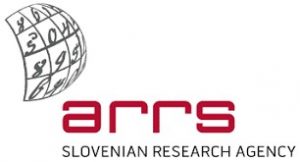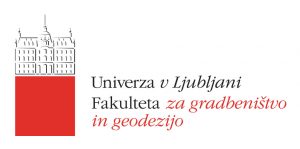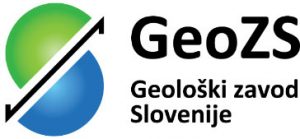J2-2489: SLOKIN – Geokinematic model of Slovenian Territory
| Project title: | SLOKIN – Geokinematic model of Slovenian Territory |
| Project team UL: | Prof. Dr. Bojan Stopar Assist. Prof. Dr. Miran Kuhar Assist. Prof. Dr. Polona Pavlovčič Prešeren Assist. Prof. Dr. Oskar Sterle Assist. Prof. Dr. Božo Koler Assist. Dr. Klemen Kregar Assist. Prof. Dr. Aleš Marjetič Assist. Gašper Štebe Assoc. Prof. Dr. Tomaž Ambrožič Assoc. Prof. Dr. Dušan Kogoj Assist. Prof. Dr. Simona Savšek Assist. Dr. Tilen Urbančič Assist. Dr. Klemen Kozmus Trajkovski Klemen Ritlop Assist. Prof. Dr. Mihaela Triglav Čekada MSc. Katja Oven Niko Fabiani Dr. Dalibor Radovan Dr. Miloš Bavec Dr. Petra Jamšek Rupnik Dr. Jure Atanackov Blaž Milanič Assoc. Prof. Dr. Marko Vrabec |
| Duration: |
36 months + 12 months 1 September 2020 – 31 August 2024 |
| Project code: | J2-2489 |
| Lead partner |
University of Ljubljana, Faculty of Civil and Geodetic Engineering
|
| Project leader at UL: | Prof. Dr. Bojan Stopar |
| Partners: |
|
| Source of finance: |  |
| Key words: | geokinematics, tectonics, geokinematic model, coordinate system |
Description
The territory of Slovenia with surrounding areas sits at the convergent boundary of two lithospheric plates, the Adriatic microplate and the Eurasian plate, which for the last several tens of millions of years converge at the rate of several mm/yr. Collision of the two plates is driving tectonic processes in the region that formed the Alpine and Dinaric orogenic belts along the boundary zone. While the ongoing deformation rates in Slovenia are relatively low in global perspective, the active tectonic processes nevertheless produce significant seismic activity which ranks Slovenia within EU countries that are the most susceptible to earthquake risk. The last 500 years have seen many damaging earthquakes, severely impacting the society and infrastructure.
Active tectonic processes also produce deformations of Earth surface, which are caused by translations and rotations along the faults, by folding, and by other ongoing tectonic displacements such as the elastic strain accumulation. Spatial distribution of tectonic deformation is typically very inhomogeneous, since it depends on the position, orientation and geometry of tectonic structures. Moreover, the patterns of tectonic deformation are also temporally variable, since they are influenced by decadal- to millennial-scale cycles of strain accumulation and release along the individual seismically active structures.
Tectonic deformation rates are high enough to be measurable with modern geodetic techniques. This, in turn, also means that coordinates of points on the Earth surface, determined and used in geodesy, are not constant, but change over time. Our previous research already ascertained that geodetic reference points in Slovenia move with relative rates of up to 7 mm/yr. Consequently, the reference points used to establish the national reference system 20 years ago may be at present time displaced for up to 15 cm relative to stable Eurasia.
Modelling of this motion is complicated since the displacements are highly inhomogeneous as both the direction and magnitude of the displacement varies from point to point. It is therefore clear that without introducing a geokinematic model, which would accurately model coordinate change over time, the national coordinate system cannot be realised with sufficient quality to satisfy the current and future accuracy requirements for positioning within the national and global coordinate systems. The ongoing digital transformation of the society and the advent of future technologies, from autonomous vehicles to smart cities, will require a persistent centimetre-level accuracy both in horizontal and vertical realization of the national coordinate system, which would be impossible to provide with the current static reference frame affected by ongoing tectonic displacements.
Recording and analysing temporal change in site coordinates is the key input for defining the regional geokinematic model. Assessment of displacements of geodetic stations, obtained by repeated or continuous geodetic measurements and their rigorous processing, is needed to reliably model the temporal change of spatial geometry.
Our study area is the ideal natural laboratory for geodetic study of active tectonic processes and for investigating geodynamic influence on stability of the geodetic reference system. The existing Slovenian network of passive (periodically occupied) GNSS sites is among the densest in Europe and in the world (Figure 2). For the majority of these sites the time series of campaign-style GNSS measurements is over 15 years long. The passive GNSS network is augmented by more than 40 continuously operating GNSS stations, distributed over the entire region, including cross-border areas in neighbouring countries. Vertical motion of points can additionally be constrained with precise levelling data, which was repeatedly acquired during the past 50 years, and with gravimetric observations. In addition, persistent scatterer radar interferometry (PSInSAR) will also be used to monitor the crustal motion. In case of consistent results with respect to the other techniques, PSInSAR processing results will also be included in the final geokinematic model.
Main goals
The proposed project will strongly build on our earlier efforts to create a horizontal geokinematic model. With this proposal, we aim to:
- update and significantly improve the horizontal geokinematic model,
- introduce a novel vertical geokinematic model (not attempted so far),
- unify the two components into a coherent 3D geokinematic model of the Slovenian territory.
The principal objective of the proposed project is to produce a unified 3D geokinematic model of active tectonic deformation in the north-eastern corner of the Adria-Eurasia collision zone.
Project work packages:
WP 1: Project Management
WP 2: Acquisition and preparation of data for creation the geokinematic model
WP 3: Definition and creation of geokinematic model of Slovenia
WP 4: Geological support and geological interpretation of geokinematic models
WP 5: Dissemination and promotion of project results



